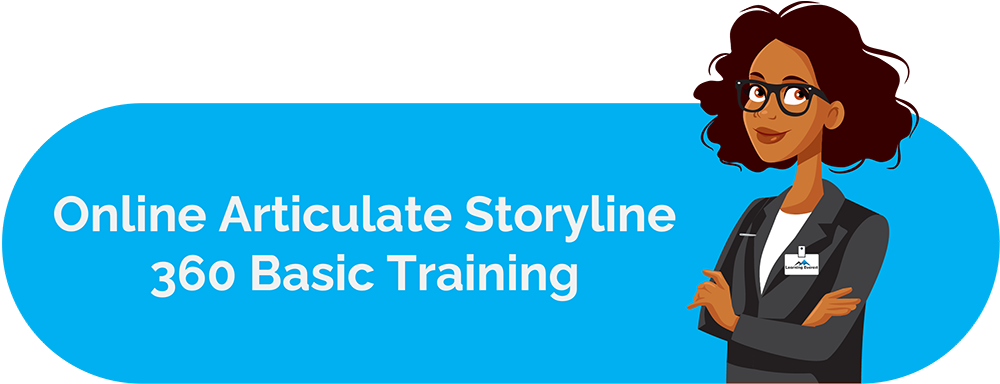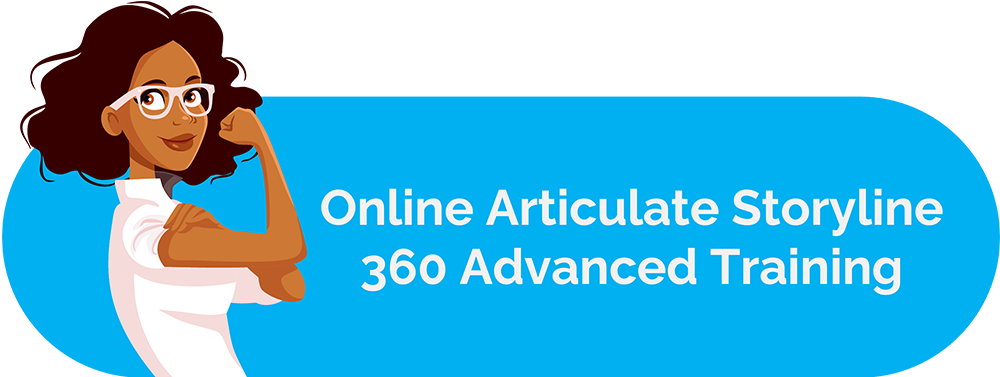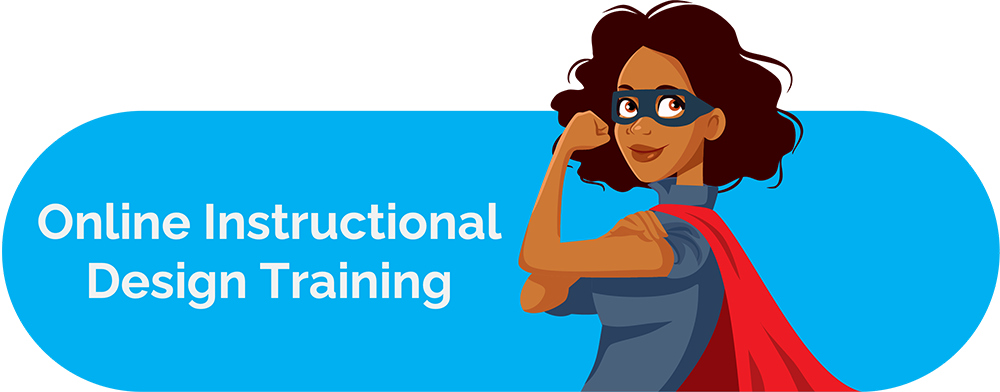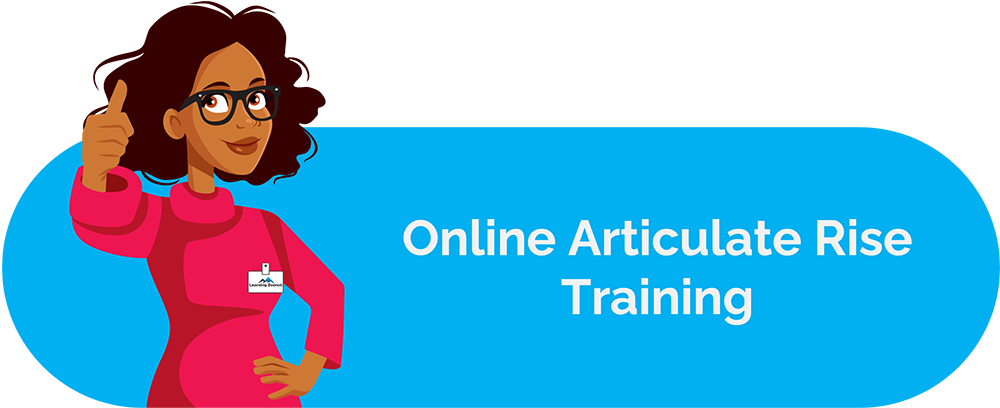Building cost-effective process training programs is a powerful way for businesses to use resources efficiently without compromising on business goals. The business world is fast-paced and intricate and process training is the key to keeping your organization afloat. This article will give you 3 tips to make process training more cost-effective without undermining the quality of learning your employees receive.
Table of Contents
What is Process Training?
Process training is the act of teaching employees, executives, and key stakeholders how to carry out different business functions and tasks. These functions and tasks fall under each person’s respective job profiles, specializations, and departments and directly influence or indirectly support the organization’s larger business goals.
In other words, process training enables companies to efficiently streamline and execute business processes. Some business process examples are payroll, inventory management, product manufacturing, and customer service.
Not all business processes require intensive training, as some are automated and might only need occasional maintenance, updating, and troubleshooting or repairs. Hence, each process training module differs in length, contents, and level of detail. People have a lot of questions around that.
Due to this, companies need to develop several different training programs at once. Considering how expensive training the employees is and the losses caused by ineffective training, cost-effective process training can help businesses maintain a good balance between meaningful instruction and efficient resource allocation.
Tips for Building Cost-Effective Process Training Programs
Let us finally look at some ways to build cost-effective process training programs for your learners.
Tip 1: Use E-Learning and the Various Delivery Formats it Offers
Adopting e-learning or converting your training content to an e-learning-compatible format is one of the most efficient ways to save training costs today.
E-learning is a cost-effective process training solution because it eliminates the need for:
- Space to hold training sessions such as auditoriums, meeting rooms, lounge areas, external venues, etc.
- Long blocks of training time, which can sometimes span several days
- Office supplies such as paper, notebooks, printing ink, and writing tools
- Physical handouts, booklets, workbooks, ID cards, log sheets, daily itineraries, and passes
- Refreshments and catering
- Instructor fee or pulling out senior employees and mentors from their other duties to deliver training
Not having to invest in these support requirements naturally reduces the cost of developing each training module or program.
E-learning is also a very flexible approach. This makes it possible to build very engaging training programs using strategies such as:
- Gamification
- Simulations
- Animated or performed skits
- Button and tab interactions
- Interactive diagrams and flow charts
Ensuring learner engagement during training activities improves the effectiveness of their learning, making it stick for longer. In turn, knowing what is expected of them makes employees more engaged at work in general. Engaged employees stay at the organization for learning. Hence, while e-learning-based process training is inexpensive to create, it also indirectly saves costs by reducing employee turnover if effective.
Tip 2: Reuse Assets and Content
Assets are the different forms of media delivery and design elements used in content development. E-learning, being a digital medium, is no different. Reusing assets from previous courses can save your business both, time and money, enabling you to create cost-efficient process training modules.
Some examples of assets are:
- Borders
- Icons
- Buttons
- Badges
- Logos
- Diagrams and pictures
- Videos
- Readings like blogs, white papers, essays, etc.
Similarly, you can use training content from another program if topics overlap. Doing so will once again save you time and money on curation, development, and potentially, manpower.
The reuse of assets has the added benefit of introducing aesthetic and stylistic uniformity to your process training programs, making it easier to group, color code, and combine them into longer courses or programs. A uniform design will also make the learning process more consistent for learners.
Tip 3: Use a Rapid Authoring and Development Tool
Rapid e-learning courses are built using software specifically meant to shorten training development time.
The following features make these programs “rapid”:
- Pre-made templates
- Easy editing features
- In-built and adaptive programming logic for feature-rich courses
- Various assessment formats
- Responsive design so one course is compatible with various devices
- Rich content libraries
Where developing an e-learning course might typically take 2-3 months, the use of rapid authoring tools can reduce it to barely 2 weeks. Furthermore, rapid authoring tool licenses are often a one-time or yearly purchase. Their relative ease in comparison to developing a course from scratch also makes them scalable. Therefore, you can train your in-house developers and employees to use these tools or outsource the work to rapid e-learning providers. This will save you costs on hiring specialized developers for each e-learning project.
Due to these compelling benefits and versatile features, rapid authoring tools can be used to create cost-effective process training modules.
Infographics
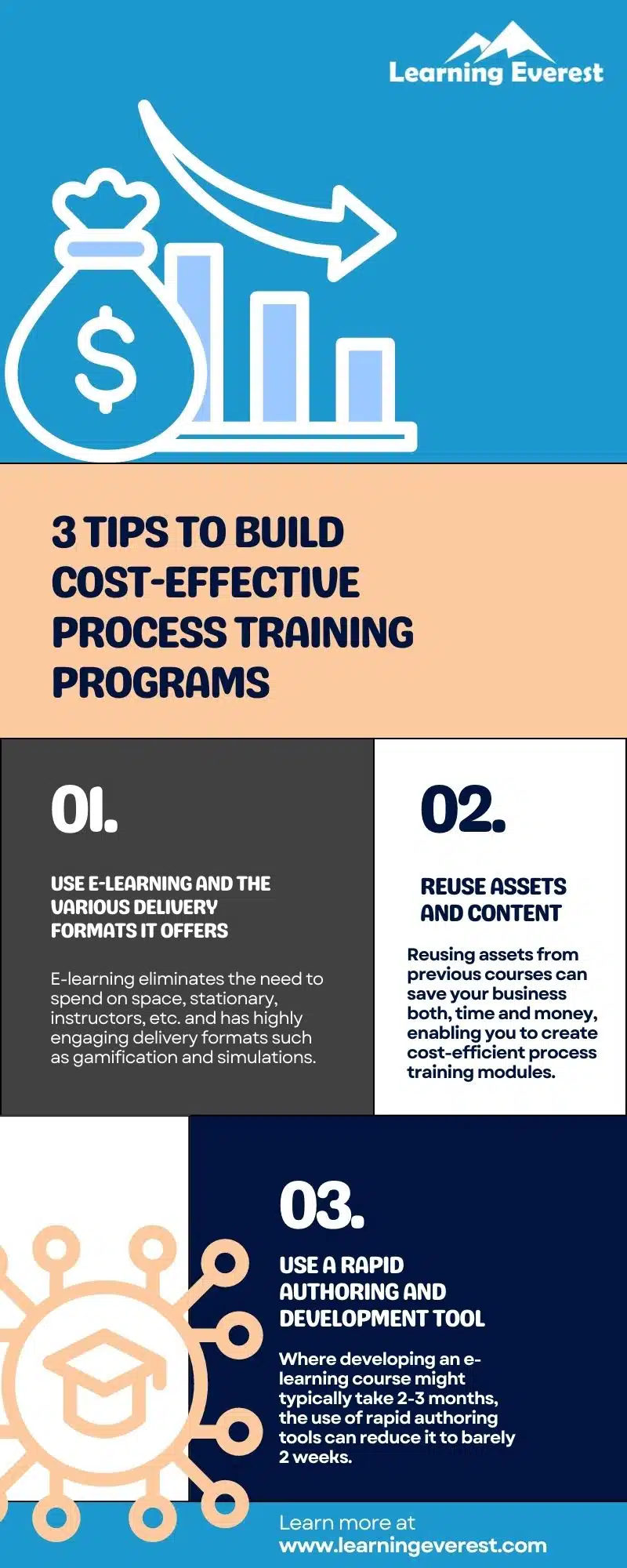
3 Tips to Build Cost-Effective Process Training Programs
Conclusion
Opting for e-learning solutions is the best way for businesses to develop cost-effective process training programs today. Through engaging learning activities, reusable content and assets, and tools like rapid authoring and development, e-learning process training solutions give you a bang for your buck while ensuring no compromises are made in terms of quality of learning.


